Nothing transforms a summer beverage quite like artfully crafted ice cubes. Beyond their practical purpose of keeping drinks cool, creative ice cubes with fruits and herbs add visual appeal, subtle flavors, and an impressive element to your summer entertaining arsenal. Whether you’re hosting a backyard barbecue or simply want to elevate your daily hydration routine, these frozen gems are the perfect way to add personality to your beverages.
In this comprehensive guide, we’ll explore everything you need to know about creating visually stunning and delicious ice cubes that will enhance your summer drink presentations and impress your guests. From selecting the perfect ingredients to mastering freezing techniques, you’ll discover how these simple additions can transform ordinary beverages into extraordinary experiences.
The Anatomy of Perfect Ice Cubes
Why Creative Ice Cubes Matter for Summer Entertaining
The art of drink presentation has evolved significantly in recent years, with specialty ice becoming a focal point in both home and professional bartending. When planning your next summer barbecue event, consider how these frozen accents can elevate the entire experience:
- Visual Impact: Colorful fruits, vibrant herbs, and delicate flowers suspended in ice create stunning visual elements
- Flavor Evolution: As ice melts, it gradually releases subtle flavors into your beverage
- Conversation Starters: Unique ice cubes naturally spark curiosity and conversation among guests
- Personalization: Match ice cube designs to event themes, drink types, or individual preferences
- Elevated Experience: Transform everyday beverages into special moments with minimal effort
The beauty of creative ice cubes lies in their simplicity—they require no special equipment or advanced techniques, just a bit of imagination and planning.
Essential Techniques for Perfect Display Ice
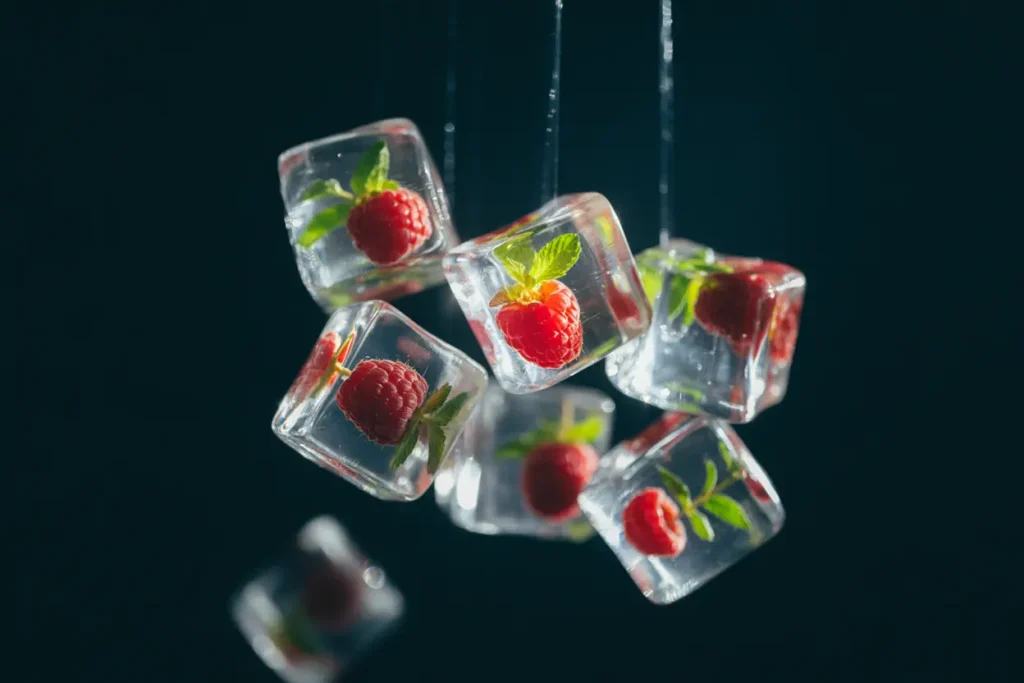
Achieving Crystal Clear Ice
For truly impressive ice cubes, clarity matters. Cloudy ice not only looks less appealing but also tends to melt faster. Here’s how to achieve that crystal-clear appearance:
- Use Distilled or Filtered Water: Tap water contains minerals and impurities that cause cloudiness when frozen
- Boil Water Twice: Boiling removes dissolved gases that create bubbles and cloudiness
- Cool Before Freezing: Allow boiled water to cool slightly before pouring into molds
- Slow Freezing: Place ice trays in a cooler filled with water and then freeze—this directional freezing forces impurities to the bottom
- Protect From Freezer Odors: Store ice cube trays in sealed containers to prevent absorption of freezer smells
| Water Type | Clarity Level | Best For |
|---|---|---|
| Tap Water | Low | Everyday use |
| Filtered Water | Medium | Most decorative cubes |
| Distilled Water | High | Display-worthy clear ice |
| Boiled Distilled | Highest | Professional presentation |
Freezing Methods for Best Results
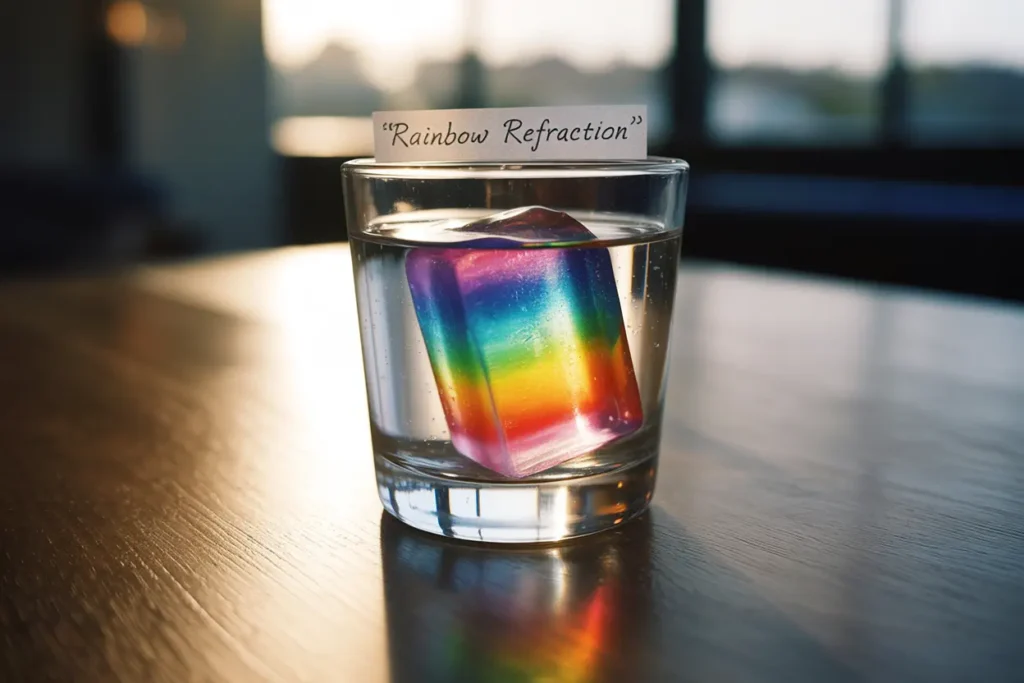
The freezing process significantly impacts the quality of your decorative ice:
- Directional Freezing: Forces water to freeze from top to bottom, pushing air bubbles and impurities downward
- Insulated Freezing: Using insulated containers to slow the freezing process for clearer results
- Layered Freezing: Creating different layers by freezing in stages, perfect for embedding ingredients
Size and Shape Considerations
Ice molds come in various shapes and sizes, each with specific benefits:
- Large Cubes/Spheres: Melt slowly, ideal for spirits and cocktails
- Standard Cubes: Versatile for most beverages
- Long Sticks: Perfect for water bottles and tall glasses
- Novelty Shapes: Add playful elements to themed events
- Crushed Ice: Best for quickly chilling and diluting strong drinks
Larger molds typically showcase ingredients better and provide slower melting rates for the most visually impressive results when using fruits and herbs.
![Various ice cube shapes with embedded fruits – Image placeholder showing different mold shapes with fruits and herbs]
Fruit-Infused Ice Cube Combinations
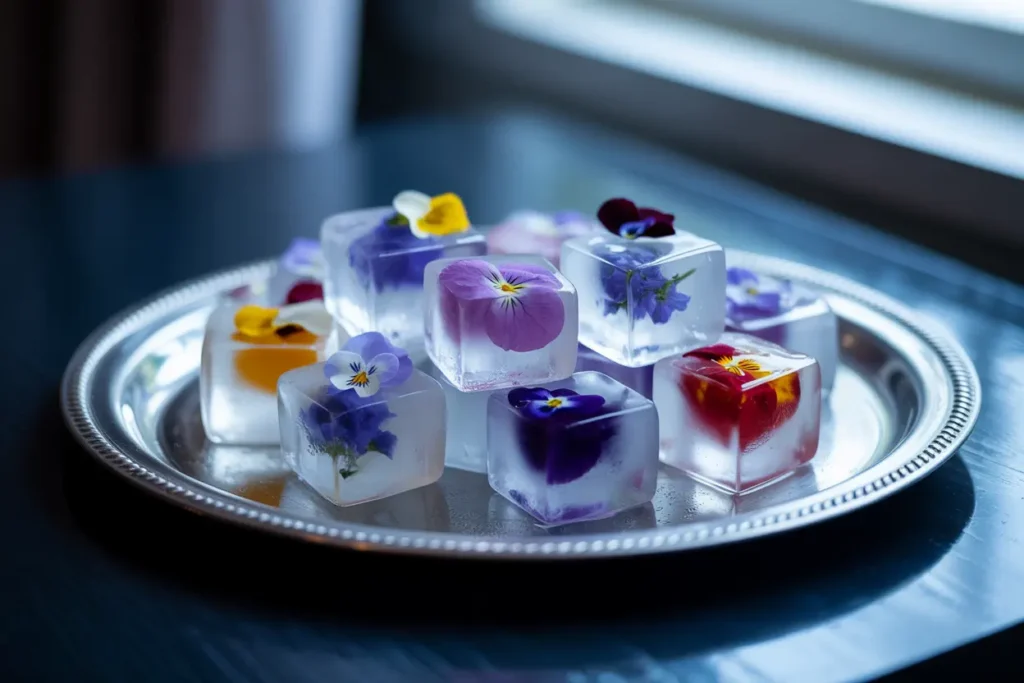
Fruit-infused ice cubes are perhaps the most popular variety. They add both visual appeal and subtle flavor to drinks, perfect for enhancing everything from still water to refreshing summer cocktails.
Citrus Varieties and Applications
Citrus fruits offer vibrant colors and refreshing flavors that complement almost any beverage:
- Lemon: Pairs beautifully with water, iced tea, and gin-based drinks
- Lime: Perfect for mojitos, margaritas, and coconut water
- Orange: Enhances whiskey cocktails, sangria, and sparkling water
- Grapefruit: Adds a bitter-sweet note to tequila drinks and fruit-infused waters
- Blood Orange: Creates stunning ruby-colored cubes for visual impact
Pro Tip: Cut citrus into thin wheels, half-moons, or small triangles for the most attractive frozen presentation.
Berry Medleys for Colorful Impact
Berries freeze beautifully and release their color and flavor as they thaw:
- Strawberries: Slice thinly or quarter for maximum visual effect
- Blueberries: Use whole for bold pops of color
- Raspberries: Freeze whole for texture and vibrant color
- Blackberries: Their deep purple hue makes a dramatic statement
- Mixed Berry Combinations: Create colorful medleys for visual interest
Berries pair wonderfully with herb-infused waters and work especially well in clear spirits or creative mocktails.
Exotic Fruit Combinations
For distinctive and unexpected flavors, consider these more exotic options:
- Kiwi + Starfruit: Creates a tropical visual effect
- Dragon Fruit + Pineapple: Stunning pink and yellow contrast
- Pomegranate Seeds: Jewel-like appearance that slowly releases flavor
- Lychee + Mint: Subtle sweetness with refreshing herbal notes
- Passion Fruit + Mango: Bold tropical flavor combination
| Fruit Combination | Flavor Profile | Ideal Drink Pairing |
|---|---|---|
| Strawberry + Basil | Sweet, herbaceous | Lemonade, Prosecco |
| Cucumber + Lime | Refreshing, tangy | Gin & tonic, water |
| Watermelon + Mint | Sweet, cooling | Vodka sodas, iced tea |
| Grapefruit + Rosemary | Bitter, aromatic | Tequila drinks, sparkling water |
| Blueberry + Lemon | Sweet-tart | Mojitos, lemonade |
| Pineapple + Coconut | Tropical, creamy | Rum cocktails, coconut water |
| Apple + Cinnamon | Spiced, sweet | Whiskey drinks, cider |
| Blackberry + Sage | Berry, earthy | Bourbon cocktails, seltzer |
Herb-Enhanced Ice Cubes
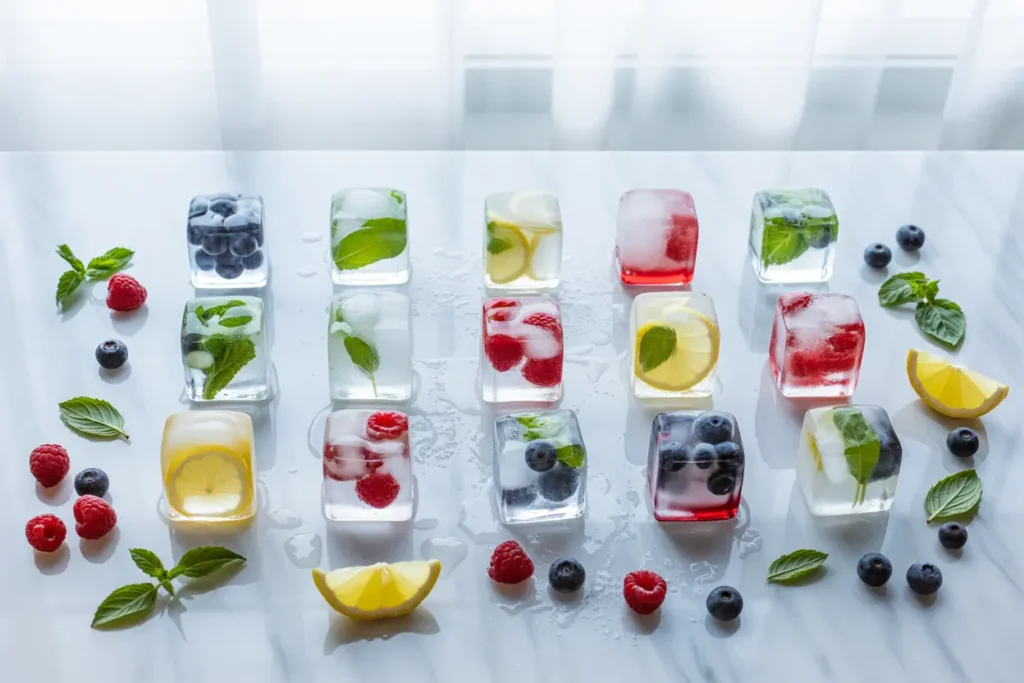
Herbs add aromatic elements and sophisticated flavors to beverages while creating visually striking patterns when frozen in ice. They’re particularly effective when paired with seasonal cocktails or as additions to your summer beverage bar.
Classic Herbs for Refreshing Notes
These traditional herbs work wonderfully in ice cubes:
- Mint: The quintessential summer herb, perfect for mojitos and lemonades
- Basil: Adds complexity to berry drinks and pairs well with citrus
- Rosemary: Provides piney, aromatic notes that complement gin and grapefruit
- Thyme: Offers subtle, earthy flavors that work with both cocktails and water
- Lavender: Creates delicate floral notes and beautiful purple accents
Unexpected Herb Combinations
For more adventurous flavor profiles, try these less common herbs:
- Lemongrass + Ginger: Spicy and citrusy notes for Asian-inspired drinks
- Sage + Blackberries: Earthy, complex flavor for sophisticated cocktails
- Tarragon + Orange: Licorice-like notes that complement citrus beautifully
- Cilantro + Lime: Bright, zesty combination for tequila-based drinks
- Fennel Fronds + Apple: Anise-flavored accent that pairs with fall fruits
Herb Preparation Methods
To maximize visual appeal and flavor release:
- Whole Leaves: For larger herbs like mint or basil, use whole leaves arranged against the sides of the mold
- Chopped Herbs: Finely chop dense herbs like rosemary for better flavor dispersion
- Muddling: Lightly crush herbs before freezing to release essential oils
- Infused Water: For intense flavor, create an herb-infused water first, then freeze
- Herb Flowers: Include the tiny flowers from herbs like thyme or basil for visual interest
![Herb-infused ice cubes – Image placeholder showing various herb combinations frozen in clear ice]
Flower and Botanical Ice Cubes
Floral ice cubes create show-stopping visual effects that are perfect for special occasions. They’re ideal for enhancing your summer beverage bar with an elegant touch.
Edible Flower Selection Guide
When using flowers in ice cubes, safety is paramount—always select edible varieties:
- Pansies: Available in various colors with a mild, sweet flavor
- Nasturtiums: Vibrant orange and yellow with a peppery taste
- Violets: Delicate purple blooms with a sweet flavor
- Marigolds: Bright orange and yellow petals with a citrusy note
- Rose Petals: Romantic addition with subtle floral notes
- Chamomile: Tiny daisy-like flowers with apple-like flavor
- Borage: Star-shaped blue flowers with a cucumber-like taste
Important Safety Note: Only use flowers that are labeled food-safe or grown without pesticides. Never use flowers from florists or garden centers, as they may contain harmful chemicals.
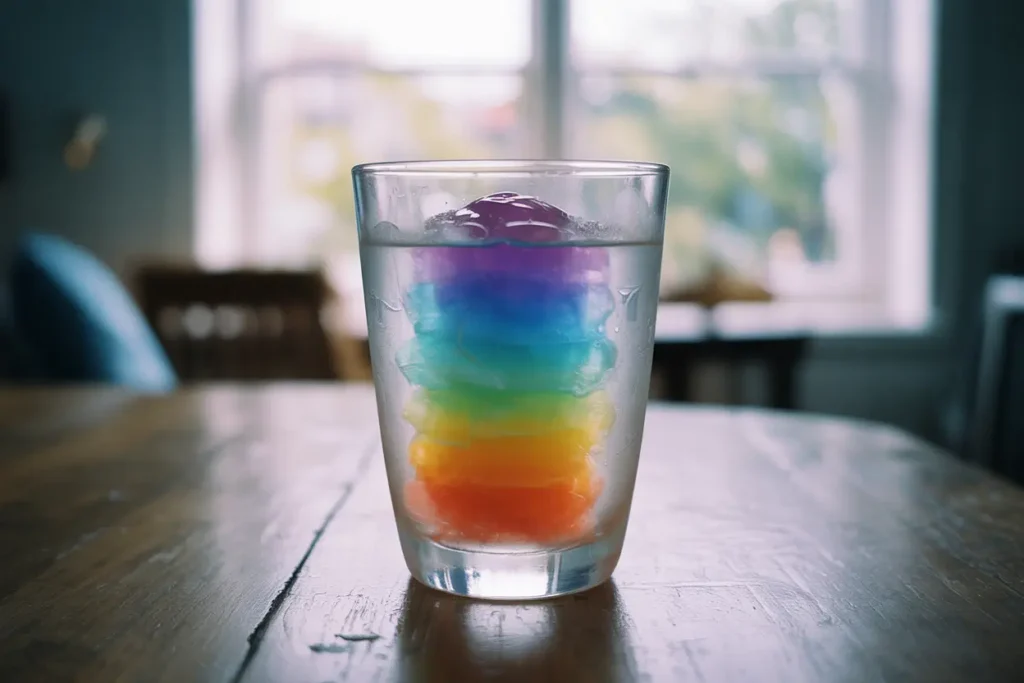
Visual Impact Techniques
To maximize the beauty of floral ice:
- Single Statement Flower: Center one perfect bloom in a large cube
- Scattered Petals: Distribute petals throughout the cube for a confetti effect
- Layered Approach: Create depth by freezing in stages with flowers at different levels
- Complementary Colors: Pair flower colors with the anticipated beverage color
- Pressing Technique: Gently press flowers against the sides of molds for a clearer view
Layered and Multi-Dimensional Ice Cubes
Creating multi-layered ice cubes allows for complex flavor combinations and stunning visual effects. This technique requires patience but delivers impressive results.
Creating Gradient Effects
For beautiful color transitions:
- Freeze a thin layer of clear water first (about 1/4 inch)
- Once solid, add a lightly colored juice layer with ingredients
- Freeze completely before adding the next color layer
- Continue building layers from lightest to darkest
This technique works particularly well for sunrise/sunset effects using citrus juices.
Embedding Techniques for 3D Effects
For ingredients that appear to float in the middle of the cube:
- Fill molds halfway with water and freeze until solid
- Position your ingredients (fruit, herbs, flowers) on the frozen layer
- Add more water to cover completely
- Freeze until solid
This method creates the illusion of suspended ingredients for a magical effect.
![Layered gradient ice cubes – Image placeholder showing multi-colored layered ice cubes with embedded ingredients]
Pairing Ice Cube Styles with Summer Drink Types
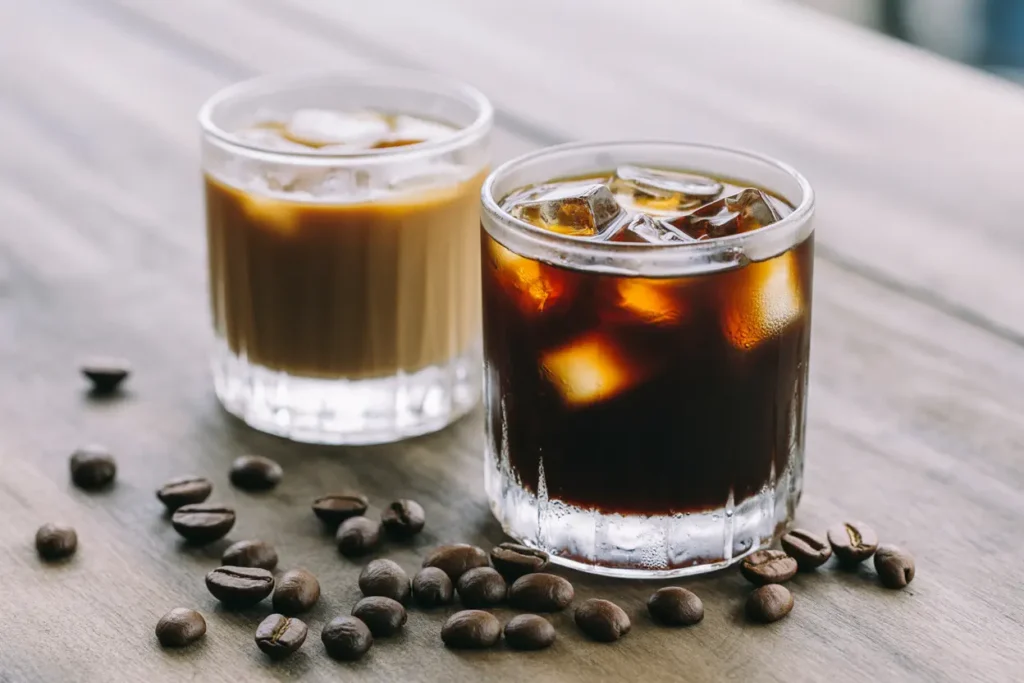
Different beverages benefit from specific types of creative ice cubes. Here’s how to make the perfect matches:
Enhancing Non-Alcoholic Refreshers
Water and non-alcoholic beverages can be transformed with these pairings:
- Cucumber + Mint Ice: Perfect for still or sparkling water
- Citrus Medley Cubes: Enhances fruit-infused waters
- Berry + Basil: Adds visual appeal and subtle flavor to lemonade
- Melon + Lime: Complements coconut water beautifully
Complementing Cocktails with Appropriate Ice
Match your ice cubes to your cocktail styles:
- Herb-forward Cubes: Perfect for gin and vodka-based drinks
- Spice-infused Ice: Complements dark spirits like whiskey and rum
- Citrus Combinations: Enhances tequila and mezcal cocktails
- Flower-embedded Cubes: Adds elegance to Champagne and wine cocktails
Which ice cube design would you try first?
Which ice cube design would you try first?
Beyond Water: Alternative Liquid Bases
While water is the traditional base for ice cubes, exploring alternative liquids opens up fascinating possibilities for both flavor and function.
Juice-Based Ice Cubes
Juice ice cubes add flavor without diluting your drink:
- Lemonade Cubes: Add to iced tea for a gradual Arnold Palmer effect
- Orange Juice Cubes: Perfect for mimosas as they won’t water down the Champagne
- Cranberry Ice: Adds color and tartness to vodka sodas
- Pomegranate Juice: Creates jewel-toned cubes for holiday drinks
- Green Juice: For an unexpected nutritional boost in morning beverages
Coffee and Tea Frozen Creations
Coffee and tea cubes prevent dilution while adding flavor:
- Coffee Cubes: Add to iced coffee for full-strength drinks to the last sip
- Chai Tea: Provides warming spices to cold milk drinks
- Matcha: Creates vibrant green cubes with antioxidant benefits
- Hibiscus Tea: Makes striking ruby-red cubes with tart flavor
- Chamomile: Adds subtle floral notes to afternoon refreshers
The science behind these alternatives relates directly to the science of flavor combinations, where complementary elements enhance each other when paired thoughtfully.
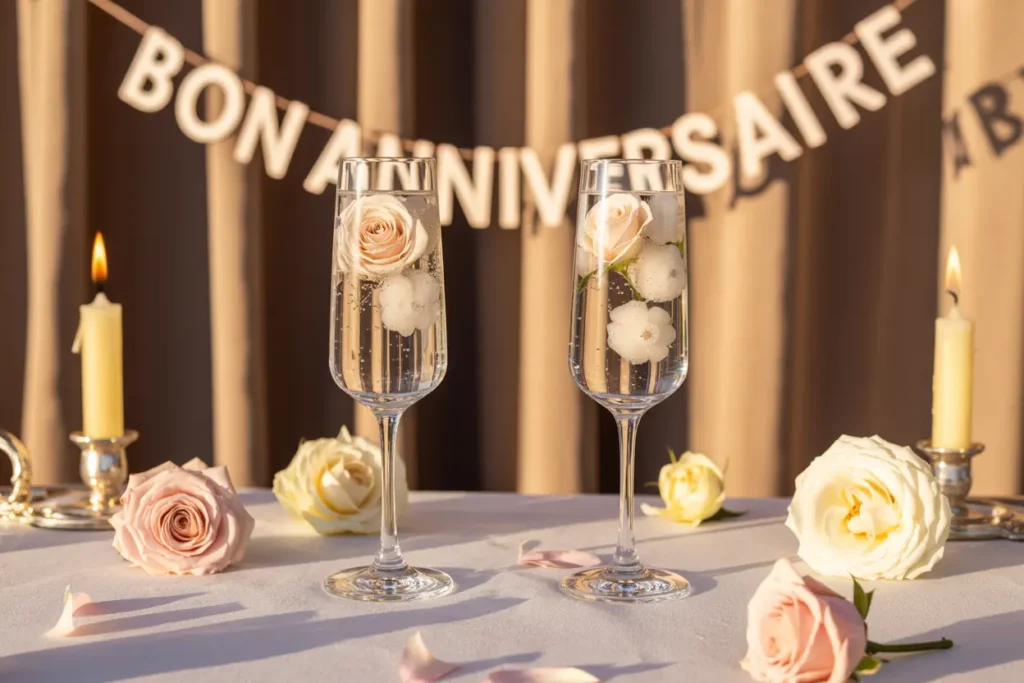
Wine and Champagne Ice Cubes
For adult beverages that maintain their integrity:
- Rosé Cubes: Ideal for keeping rosé cold without dilution
- Prosecco Ice: Perfect for sparkling wine cocktails
- Sangria Cubes: Adds fruity wine flavor to spritzers
- White Wine + Fruit: Creates sophisticated additions to summer punches
Remember that alcohol freezes at a lower temperature than water, so these cubes may be softer and melt more quickly.
![Coffee and juice ice cubes – Image placeholder showing alternative liquid ice cubes in appropriate drinks]
Entertaining with Specialty Ice
When hosting gatherings, creative ice becomes both functional and decorative. As part of your BBQ event planning, consider these presentation options:
Ice Bars and Self-Serve Stations
Create an interactive experience for guests:
- Flavored Ice Station: Offer various flavored cubes alongside plain beverages
- Build-Your-Own Drink Bar: Include specialty ice as one component of a comprehensive summer beverage bar
- Ice Bucket Displays: Use large clear containers to showcase colorful ice varieties
- Labeled Options: Create small signs identifying each ice cube flavor combination
Presentation Ideas for Maximum Impact
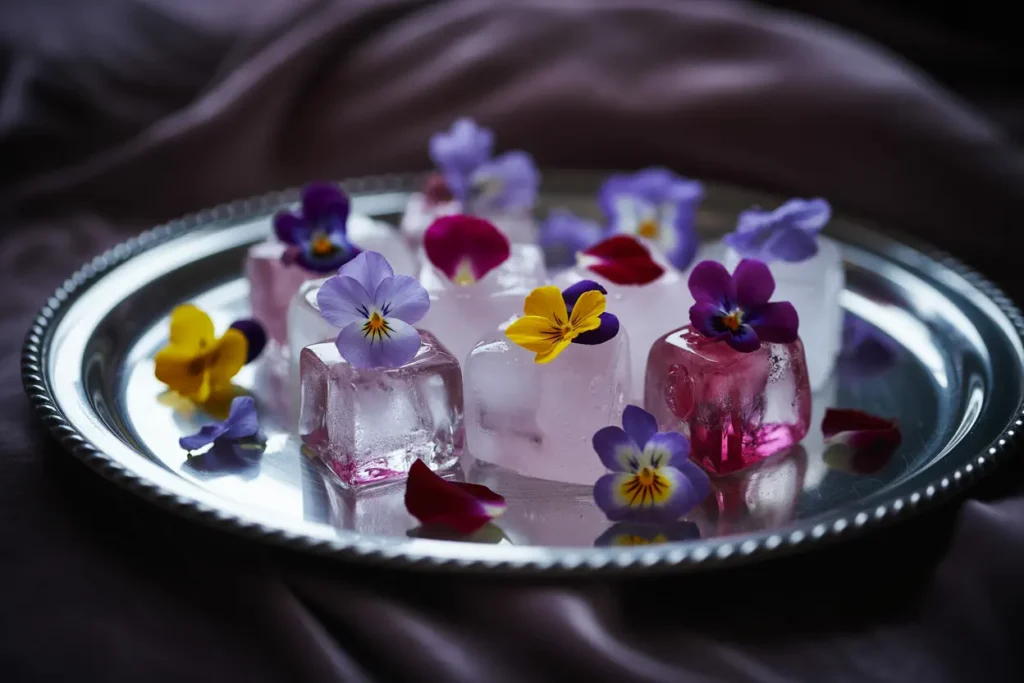
Elevate your presentation with these tips:
- Clear Glassware: Showcases the beauty of specialty ice
- Ice-Only Containers: Serve decorative ice separately for guests to select
- Ice Sculptures: For larger events, consider ice bowls or containers made from ice
- Coordinated Colors: Match ice cube ingredients to your event color scheme
- Garnish Pairings: Provide fresh garnishes that complement the ice cube flavors
Make-Ahead Tips for Events
Prepare successfully with these timeline strategies:
- One Week Before: Research and plan your ice cube designs
- Three Days Before: Purchase all fresh ingredients
- Two Days Before: Begin freezing ice in batches
- Day Before: Complete all freezing and transfer to sealed containers
- Event Day: Set up display stations and final preparations
What’s Your Ice Cube Style?
What’s Your Ice Cube Style?
Health and Hydration Benefits
Creative ice cubes offer benefits beyond aesthetics—they can actually contribute to better hydration and wellness.
Encouraging Water Consumption
Many people struggle to drink enough water, especially in summer when hydration is crucial:
- Visual Appeal: Beautiful ice makes water more enticing
- Flavor Enhancement: Subtle flavors make plain water more interesting
- Gradual Infusion: As ice melts, flavors evolve, encouraging continued sipping
- Children’s Engagement: Fun ice shapes and colors can help kids drink more water
Natural Flavor Infusion Without Additives
For those seeking to avoid artificial ingredients:
- Natural Sweetness: Fruits impart subtle sweetness without added sugar
- Aromatic Components: Herbs provide complexity without artificial flavors
- Visual Enhancement: Natural colors from fruits and flowers replace artificial dyes
- Nutrient Transfer: Some vitamins and antioxidants from fruits transfer to beverages
When using local ingredients in your ice cubes, you get the added benefits of freshness and supporting local agriculture.
Seasonal Ice Cube Calendar
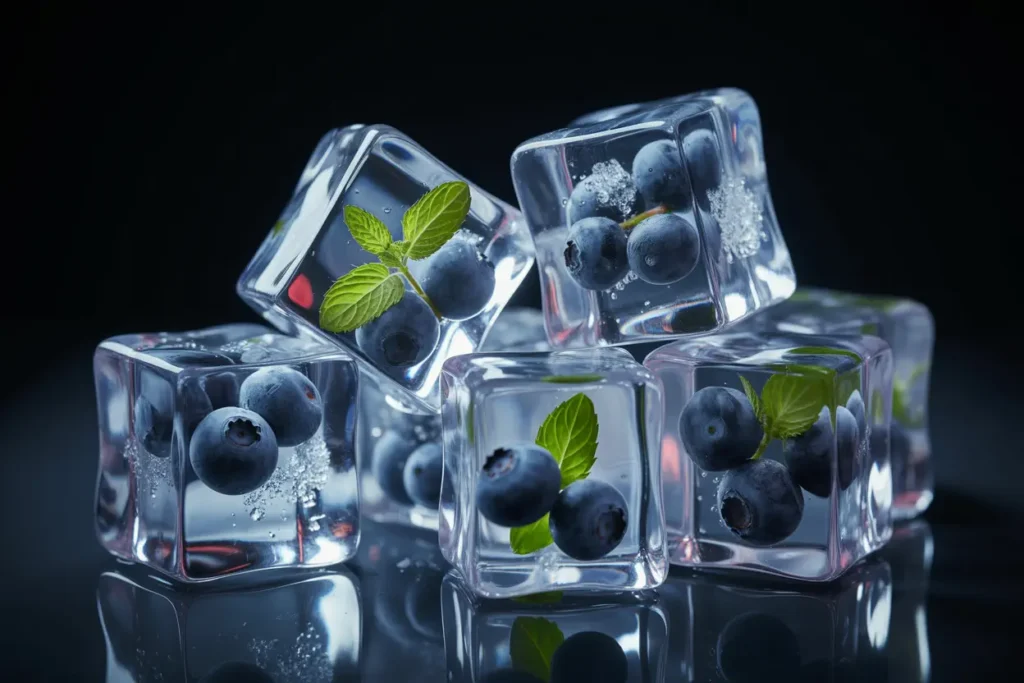
Adapt your ice cube creations to reflect the changing seasons and available ingredients.
Summer Fruit and Herb Combinations
Summer offers the richest variety of fresh ingredients:
- June: Strawberry + mint, cherry + lime
- July: Blackberry + basil, watermelon + cucumber
- August: Peach + thyme, blueberry + lemon
- Summer Flowers: Nasturtiums, borage, and pansies
These combinations perfectly complement the flavors featured in our comprehensive summer drinks guides.
![Seasonal ice cube calendar – Image placeholder showing monthly ice cube suggestions with seasonal ingredients]
Current Trends in Creative Ice Cubes
Staying current with summer drink trends enhances your entertaining repertoire. For 2024-2025, these ice cube innovations are gaining popularity:
Spicy and “Swicy” Combinations
Following the broader beverage trend of combining sweet and spicy flavors:
- Jalapeño + Watermelon: Creates a surprising heat that builds gradually
- Pineapple + Chili: Tropical sweetness with a warming finish
- Ginger + Peach: Spicy and sweet elements that complement each other
Botanical-Forward Ice
Reflecting the ongoing interest in complex botanical flavors:
- Rose + Cardamom: Floral notes with warming spice
- Lavender + Lemon: Aromatic and bright combination
- Cucumber + Elderflower: Delicate and refreshing profile
Wellness-Focused Additions
Incorporating functional ingredients that offer potential benefits:
- Turmeric + Citrus: Anti-inflammatory properties with bright flavor
- Adaptogenic Herbs: Adding herbs like ashwagandha to calm-promoting beverages
- Antioxidant-Rich Berries: Highlighting blueberries, acai, and goji for their nutrients
Troubleshooting Common Issues
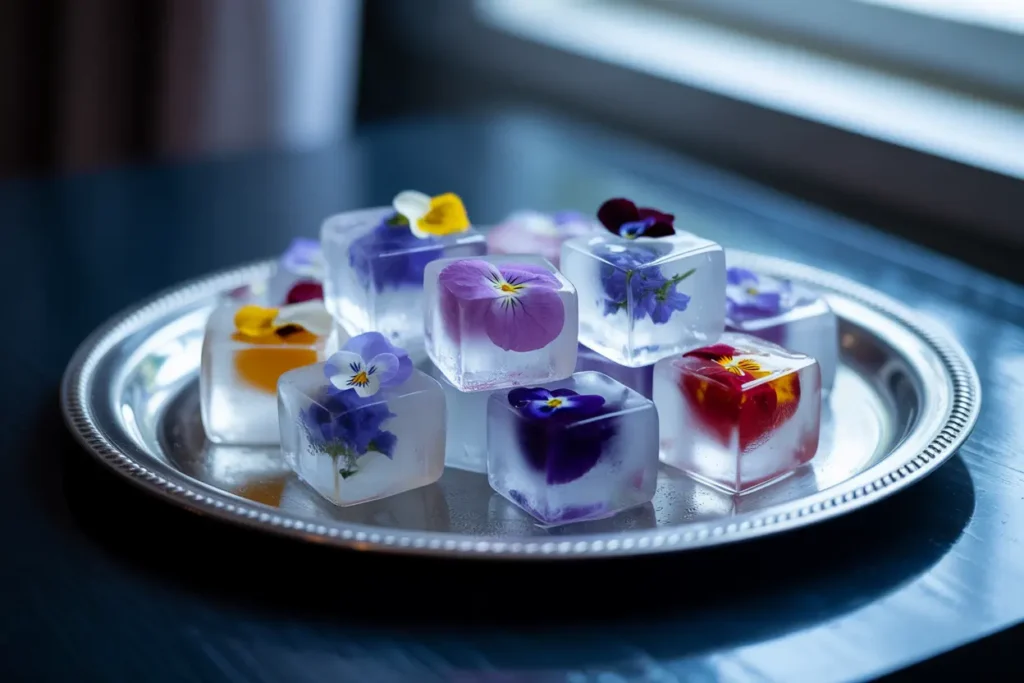
Even with the best intentions, specialty ice cubes can present challenges. Here are solutions to common problems:
Preventing Cloudiness
If your ice cubes lack clarity:
- Double-Boil Water: Boil water, cool slightly, then boil again to remove dissolved gases
- Use Distilled Water: Eliminates minerals that cause cloudiness
- Directional Freezing: Freeze from top down using insulated containers
- Slow Freezing: Place in freezer without other items nearby for more gradual cooling
Managing Melting Rates
To control how quickly your ice melts:
- Pre-Chill Glassware: Reduces heat transfer to ice
- Larger Cubes: Melt more slowly due to reduced surface area
- Double-Cup Method: Use insulated cups or double-walled glassware
- Serving Temperature: Serve beverages already chilled to reduce ice melt
Color Bleeding Solutions
To prevent fruit colors from staining:
- Flash Freeze: Freeze fruits separately before adding to water
- Pat Dry: Remove excess moisture from fruits and herbs
- Layer Protection: Create clear ice barriers between colorful elements
- Gentle Handling: Avoid stirring drinks aggressively
Understanding the Science Behind Flavored Ice
When creating flavored ice cubes, there’s fascinating science at work that explains why certain combinations are more successful than others. This connects directly to the broader science of flavor in beverages.
Flavor Extraction During Freezing
- Soluble Compounds: Water-soluble flavor compounds are the most effectively transferred during freezing
- Essential Oils: Herbs release aromatic compounds differently when frozen versus fresh
- Cellular Structure: Freezing breaks down cell walls in fruits, releasing flavors more readily
Temperature Effects on Perception
- Cold Dulls Sweetness: Ice-cold temperatures reduce perception of sweet flavors
- Enhanced Aromatics: Certain herb aromas become more pronounced at specific temperatures
- Evolving Flavors: As ice melts and warms, different flavor compounds become more perceptible
This scientific understanding helps explain why the proper combination of ingredients and techniques is essential for successful flavor-infused ice cubes.
Advanced Techniques for Professionals
For those looking to take their ice cube creations to the next level:
Spherification in Ice
- Using molecular gastronomy techniques to create bursting flavor spheres inside ice
- Creating “caviar” pearls of juice or liqueur that remain liquid within the ice
Smoke-Infused Ice
- Capturing smoke flavors in water before freezing
- Creating smoked ice for enhancing spirits and complex cocktails
Layered Flavor Release
- Engineering ice to release different flavors as it melts
- Creating time-release effects through strategic embedding of ingredients
Conclusion and Inspiration Gallery
Creative ice cubes with fruits and herbs provide an accessible way to elevate everyday beverages and special occasion drinks alike. From improving hydration to enhancing visual appeal, these frozen accents deliver benefits far beyond keeping your drink cold.
As you explore the world of specialty ice, remember that experimentation is key—combine unexpected ingredients, try new freezing techniques, and don’t be afraid to create your signature ice cube designs that reflect your style and flavor preferences.
The next time you plan a summer barbecue or want to make your daily hydration more exciting, consider how a simple ice cube with a creative twist can transform the entire experience.
![Inspiration gallery – Image placeholder showing multiple beautiful drinks with creative ice cubes]
Frequently Asked Questions
Can I use any flowers in my ice cubes?
No, you should only use edible flowers grown without pesticides or chemicals. Good options include pansies, violets, nasturtiums, borage, and marigolds. Never use flowers from florists or garden centers as they may contain harmful substances not intended for consumption.
Why do my ice cubes with herbs turn brown?
Browning typically occurs when herbs oxidize. To prevent this, blanch delicate herbs quickly in boiling water, followed by an ice bath, before freezing. Another option is to add herbs to partially frozen cubes rather than exposing them to the full freezing process.
How far in advance can I make specialty ice cubes for a party?
Most decorative ice cubes can be made 3-5 days in advance. Store them in airtight containers or freezer bags to prevent freezer burn and absorption of odors. Transfer them to sealed containers once completely frozen for best results rather than leaving them in ice trays.
Do fruit ice cubes make drinks too sweet?
The flavor infusion from fruit ice cubes is generally subtle and not overpowering. The fruit adds more aroma and visual appeal than actual sweetness. If you’re concerned about sweetness, use less sweet fruits like cucumber, citrus, or berries rather than very sweet options like mango or pineapple.
What’s the best ice shape for slow melting in cocktails?
Large spheres or 2-inch cubes melt most slowly due to their lower surface area-to-volume ratio. These shapes are ideal for spirits served neatly or in cocktails where minimal dilution is desired. Traditional cubes or rectangular shapes work well for standard mixed drinks while providing adequate cooling.
How can I create clear ice at home without special equipment?
The most accessible method is the directional freezing technique: boil distilled water twice, let it cool slightly, fill an insulated container (like a small cooler) with water, leave the top uncovered, and place it in the freezer for 24 hours. The water will freeze from top to bottom, forcing impurities and air bubbles downward. Cut off and discard the cloudy bottom portion.
Are there any fruits that don’t work well in ice cubes?
Yes, some fruits are less suitable for freezing in ice. Bananas turn brown and mushy, soft berries like raspberries may bleed too much color, and high-sugar fruits like mangoes can prevent proper freezing. Citrus fruits, firm berries, and melons generally work best.
How can I create perfectly layered ice cubes without the layers mixing?
The key is patience and temperature control. Freeze each layer completely (at least 2 hours) before adding the next. For clean layers, make sure the previous layer is completely solid, and add the next layer of liquid at a cool but not freezing temperature to prevent melting the existing ice.

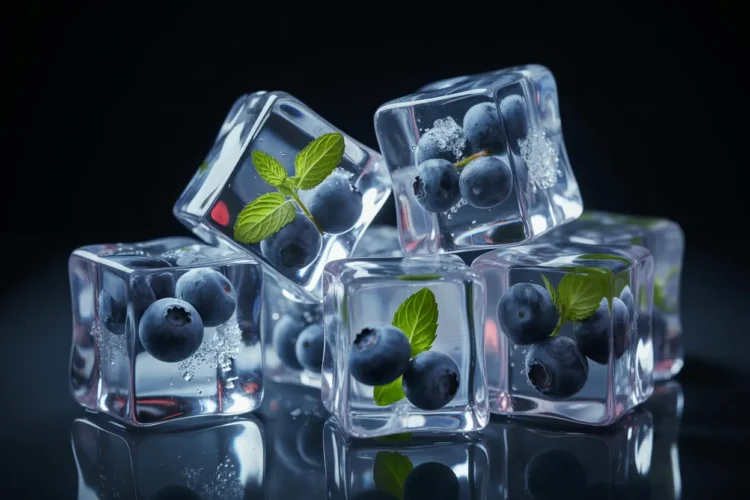
Pingback: Hydration Essential Benefits at Summer Events: A Complete Refreshment Guide - Whaley Cooks